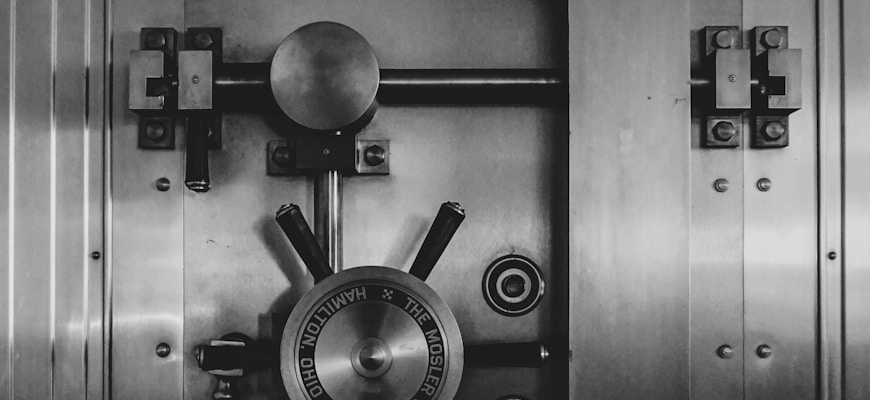The Future of Crypto Risk Management: Tools and Strategies

- Understanding the evolving landscape of crypto risk management
- Key tools and technologies for effective crypto risk management
- Exploring the role of decentralized finance in crypto risk management
- Challenges and opportunities in implementing risk management strategies for cryptocurrencies
- The importance of regulatory compliance in crypto risk management
- Best practices for securing your crypto assets in a rapidly changing environment
Understanding the evolving landscape of crypto risk management
The landscape of crypto risk management is constantly changing and evolving as the cryptocurrency market continues to mature. In order to effectively navigate this landscape, it is crucial for organizations to stay updated on the latest tools and strategies available to manage and mitigate risks associated with cryptocurrencies.
One key aspect of understanding the evolving landscape of crypto risk management is the importance of staying informed about regulatory developments in the cryptocurrency space. Regulatory changes can have a significant impact on the risk profile of cryptocurrencies, and organizations need to be proactive in adjusting their risk management strategies accordingly.
Another important consideration in the evolving landscape of crypto risk management is the increasing sophistication of cyber threats targeting cryptocurrencies. As the value of cryptocurrencies continues to rise, they have become attractive targets for cybercriminals looking to exploit vulnerabilities in the digital asset ecosystem.
Organizations need to be vigilant in implementing robust cybersecurity measures to protect their assets from these evolving threats. This includes using advanced encryption techniques, implementing multi-factor authentication, and conducting regular security audits to identify and address potential vulnerabilities.
Overall, understanding the evolving landscape of crypto risk management requires a proactive and adaptive approach. By staying informed about regulatory changes, being aware of emerging cyber threats, and implementing strong cybersecurity measures, organizations can effectively manage and mitigate risks associated with cryptocurrencies in an ever-changing market environment.
Key tools and technologies for effective crypto risk management
When it comes to effective crypto risk management, there are several key tools and technologies that can help organizations mitigate potential risks and protect their assets. These tools are essential for staying ahead of the ever-evolving landscape of cryptocurrency threats. Here are some of the top tools and technologies that can aid in effective crypto risk management:
- Cryptocurrency Wallets: Utilizing secure cryptocurrency wallets is crucial for safeguarding digital assets. Hardware wallets, such as Ledger or Trezor, offer an extra layer of protection through offline storage.
- Encryption: Implementing encryption techniques can help protect sensitive data and transactions from unauthorized access. Tools like Pretty Good Privacy (PGP) or VeraCrypt can be used to secure communications and files.
- Multi-factor Authentication (MFA): MFA adds an extra step to the login process, making it more difficult for hackers to gain access to accounts. Services like Google Authenticator or Authy provide additional security for crypto accounts.
- Risk Assessment Tools: Utilizing risk assessment tools can help identify and prioritize potential threats to cryptocurrency holdings. Tools like Riskalyze or RiskMetrics can assist in evaluating risk levels and implementing appropriate mitigation strategies.
- Blockchain Analysis Tools: Monitoring blockchain transactions can help detect suspicious activity and potential threats. Tools like Chainalysis or Elliptic provide insights into blockchain transactions for enhanced risk management.
Exploring the role of decentralized finance in crypto risk management
Decentralized finance, or DeFi, has emerged as a key player in the realm of crypto risk management. By leveraging blockchain technology, DeFi platforms offer a decentralized alternative to traditional financial systems, allowing users to access a wide range of financial services without the need for intermediaries.
One of the key ways in which DeFi is revolutionizing crypto risk management is through the use of smart contracts. These self-executing contracts are programmed to automatically enforce the terms of an agreement, reducing the need for human intervention and minimizing the risk of fraud or error.
Furthermore, DeFi platforms often use a system of collateralization to manage risk. Users are required to lock up a certain amount of cryptocurrency as collateral in order to access loans or other financial services. This helps to mitigate the risk of default and ensures that lenders are protected in the event of a market downturn.
Overall, decentralized finance is playing an increasingly important role in the world of crypto risk management. By providing a secure, transparent, and efficient alternative to traditional financial systems, DeFi is helping to drive innovation and reshape the way we think about managing risk in the crypto space.
Challenges and opportunities in implementing risk management strategies for cryptocurrencies
Implementing risk management strategies for cryptocurrencies presents a unique set of challenges and opportunities in the ever-evolving landscape of digital assets. Cryptocurrencies are known for their volatility, making it crucial for investors and businesses to have a robust risk management plan in place to mitigate potential losses.
One of the main challenges in implementing risk management strategies for cryptocurrencies is the lack of regulation and oversight in the industry. This can make it difficult to assess the risks associated with digital assets accurately. However, this also presents an opportunity for innovative solutions to emerge, such as the development of new risk management tools and techniques tailored specifically to the crypto market.
Another challenge is the inherent complexity of cryptocurrencies and blockchain technology, which can make it challenging to identify and assess risks accurately. It is essential for businesses and investors to stay informed about the latest developments in the crypto space to make informed decisions about their risk management strategies.
On the other hand, the decentralized nature of cryptocurrencies also presents opportunities for diversification and hedging strategies that may not be available in traditional financial markets. By diversifying their crypto holdings across different assets and implementing hedging techniques, investors can reduce their overall risk exposure and protect their investments.
In conclusion, while implementing risk management strategies for cryptocurrencies may pose challenges, it also offers unique opportunities for innovation and growth in the digital asset space. By staying informed, leveraging new technologies, and adopting best practices, businesses and investors can navigate the complexities of the crypto market and protect their investments effectively.
The importance of regulatory compliance in crypto risk management
Regulatory compliance is a crucial aspect of crypto risk management. Ensuring that your operations comply with relevant laws and regulations is essential to protect your business from potential legal and financial risks. Failure to comply with regulatory requirements can result in severe penalties, including fines and even criminal charges.
By following regulatory guidelines, you can also build trust with your customers and partners. Demonstrating that you are committed to upholding the highest standards of compliance can help you attract more investors and clients. Moreover, complying with regulations can enhance your reputation in the industry and differentiate you from competitors.
When it comes to managing risks in the crypto space, regulatory compliance should be a top priority. By staying informed about the latest regulations and ensuring that your business practices adhere to them, you can mitigate the potential threats associated with non-compliance. Investing in robust compliance processes and systems can ultimately save you time, money, and reputation in the long run.
Best practices for securing your crypto assets in a rapidly changing environment
When it comes to securing your crypto assets in a rapidly changing environment, there are several best practices that you can follow to minimize risks and protect your investments.
One important thing to keep in mind is to always use a secure wallet to store your crypto assets. This can be a hardware wallet, a paper wallet, or a secure software wallet. By keeping your assets in a secure wallet, you can reduce the risk of theft or hacking.
Another best practice is to enable two-factor authentication (2FA) on all of your crypto exchange accounts. This adds an extra layer of security by requiring a second form of verification in addition to your password.
It’s also essential to regularly update your software and firmware to ensure that you have the latest security patches and updates. Hackers are constantly evolving their tactics, so staying up to date with your security measures is crucial.
Furthermore, consider diversifying your crypto investments across different assets and exchanges. This can help reduce the risk of loss in case one asset or exchange is compromised.
Lastly, always be cautious of phishing scams and only share your personal information with trusted sources. By staying vigilant and following these best practices, you can better secure your crypto assets in an ever-changing landscape.



